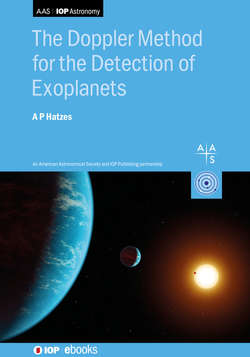Читать книгу The Doppler Method for the Detection of Exoplanets - Professor Artie Hatzes - Страница 43
На сайте Литреса книга снята с продажи.
3.1.2 Signal-to-noise Ratio
ОглавлениеIn the absence of other sources of noise, the error in your spectral data, σp, is determined purely by the number of photons you detect, Np, and according to photon statistics, this is simply σp=Np. The photon noise is the theoretical limit to the RV precision you can achieve for a given exposure. If you do this, then you have a perfect spectrograph and have done an excellent job of eliminating systematic errors, or at least to a level where they are not important.
Figure 3.2 shows the result of simulations where increasing levels of noise were added to a spectral line and the relative Doppler shift was calculated with respect to a noise-free line. The RV uncertainty follows the simple power law
σ∝(S/N)−1,(3.2)
Figure 3.2. Simulations (points) showing the normalized RV measurement error as a function of signal-to-noise ratio, S/N. The error has been normalized to unity for S/N = 1000. The behavior shows that σRV∝(S/N)−1.
At face value, it would seem that simply increasing the S/N is a quick way of achieving a lower RV uncertainty. However, as with most things in life, an increase in quality comes at a price, and in this case, it is paid with exposure time. Suppose you achieve an RV error of σ = 10 m s−1 for S/N = 50 using a 15 minute exposure. Decreasing this error to 1 m s−1 requires a 10-fold increase in the exposure time to about 2.5 hr. This would not be an effective strategy if you want to survey a large number of stars, or if you have limited telescope resources. For bright stars, it is wise to limit your the S/N ratio to no higher than about 200. Above this, there is relatively little gain in the RV precision. Furthermore, using a higher S/N to achieve RV precisions of 1 m s−1 is probably an inefficient use of telescope time because other factors, such as systematic errors or intrinsic stellar variability, will determine your precision before you hit the photon noise limit.
